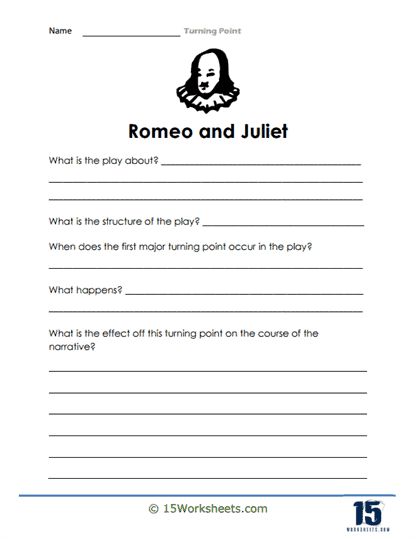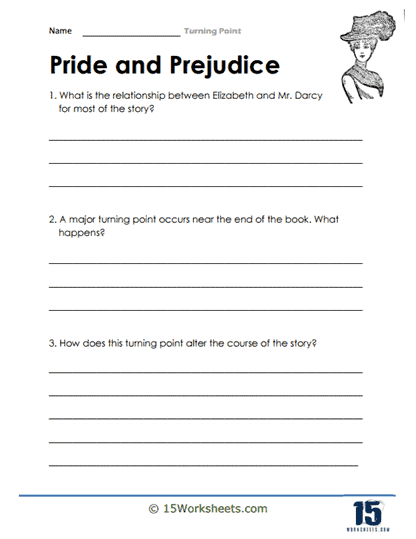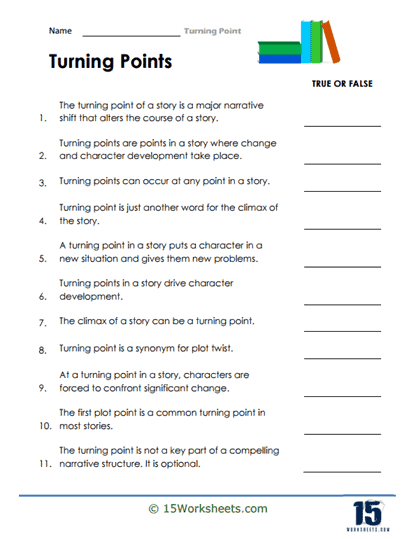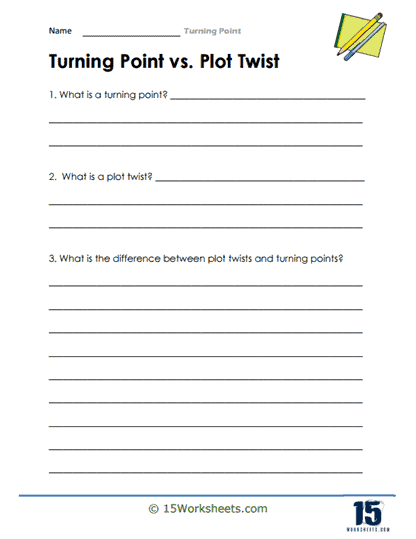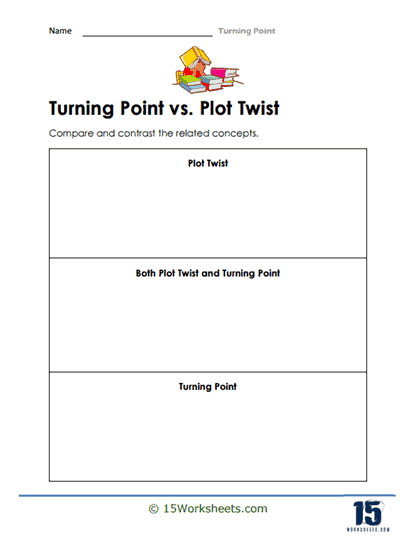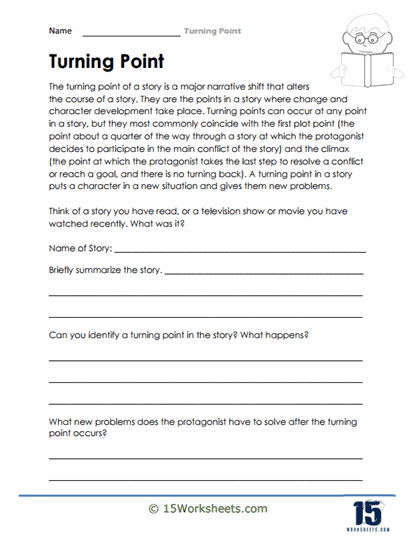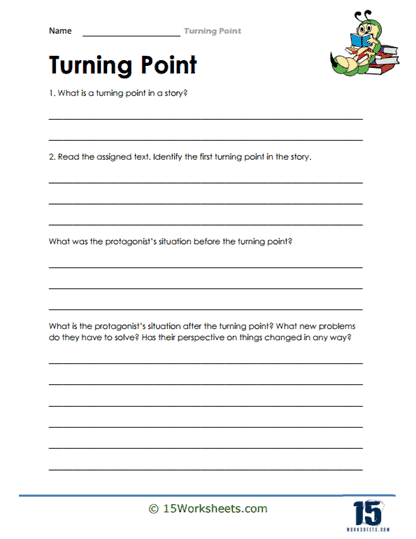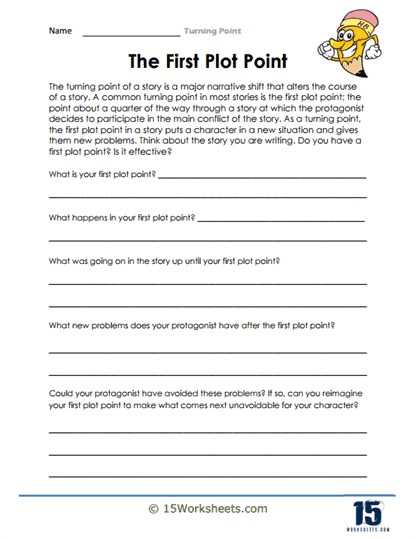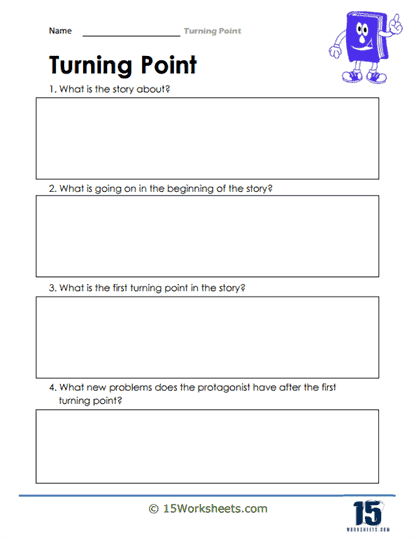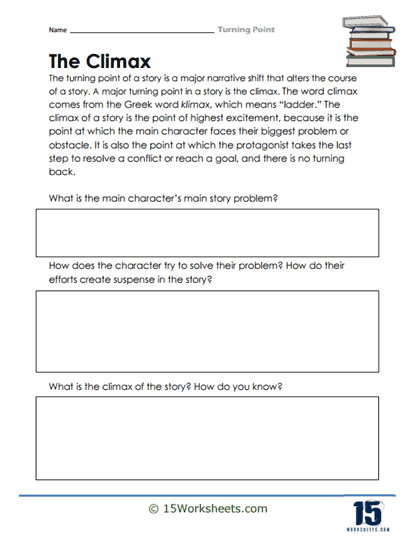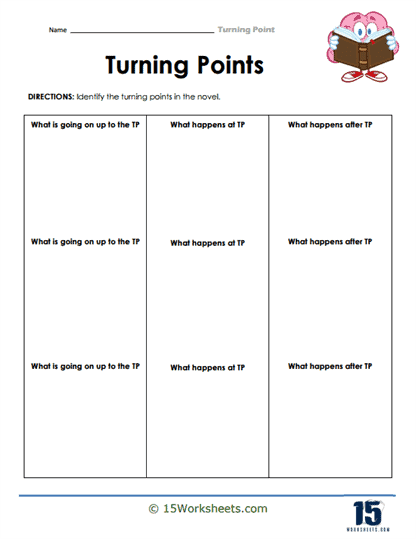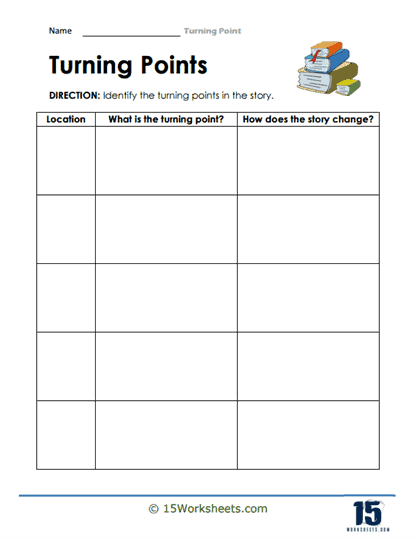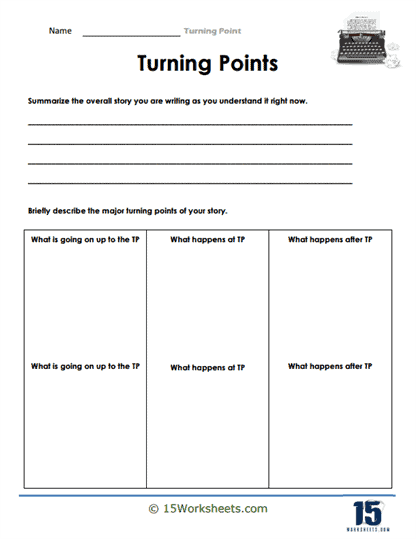Turning Point Worksheets
All About These 15 Worksheets
This collection of Turning Point worksheets is a comprehensive and dynamic resource designed to help students explore the pivotal moments that shape narratives in literature. These worksheets are carefully crafted to engage students in critical analysis, storytelling comprehension, and creative thinking. It serves as an invaluable tool for educators looking to deepen their students’ understanding of storytelling techniques and their ability to appreciate and create compelling narratives.
The Importance of Turning Points in a Story
Turning points are the linchpins of storytelling. They are the moments when a narrative takes a dramatic turn, leading to significant developments in the plot or character arcs. Understanding the importance of turning points in a story is crucial for several reasons:
- Plot Development: Turning points drive the plot forward, creating a sense of progression and intrigue that keeps readers or viewers engaged.
- Character Arcs: These moments often coincide with changes in a character’s journey, leading to growth, transformation, or new challenges.
- Emotional Engagement: Turning points can evoke powerful emotions in the audience, drawing them deeper into the story and forging a connection with the characters.
- Narrative Structure: Recognizing turning points helps students understand the fundamental structure of narratives, contributing to their overall literacy.
- Critical Thinking: Analyzing turning points encourages critical thinking skills as students evaluate the cause-and-effect relationships and consequences of these narrative shifts.
- Creative Writing: Understanding the mechanics of turning points empowers students to apply these techniques in their own creative writing endeavors.
This collection of Turning Point worksheets is a valuable resource for educators seeking to enhance their students’ comprehension of narrative structure and storytelling techniques. By delving into the significance of turning points, students not only gain a deeper appreciation for literature and film but also develop the critical thinking and creative skills needed to analyze, interpret, and craft compelling narratives. This collection equips educators with the tools to guide students in exploring the dynamic world of storytelling and its profound impact on our understanding of the human experience.
What Is the Turning Point of a Story?
Stories would surely be boring without exhilarating twists and turns..
A turning point is basically a specific moment in a storyline that introduces a sudden plot change to give it a new dimension. In simpler words, this is also known as a plot twist. Not only that, it is majorly characterized as something that the reader (or viewer) will not be expecting.
One of the most famous turning points in history is that of Shakespeare’s Romeo and Juliet. With the first half of the story eliciting the love of both protagonists, the plot twist – the death of two main characters – majorly shifts the entire tone from being sweet and romantic to one that depicts the lovers’ desperation to stay together.
Needless to say, turning points add some much-needed, attention-grabbing drama that every story needs to keep the readers hooked. So, how exactly can one write great turning points? Let’s explore.
1. Turning Points Should Happen at Major Story Beats
What better way to excite someone than by creating havoc?
One of the main characteristics of a turning point is it is established when a major decision needs to be made. This decision will prove to be crucial when reaching the end of the story. All in all, the critical nature of the situation is what makes the turning point as exciting as it should be.
2. Build to the Turning Point
Keep the build to the turning point slow and steady but interesting.
Readers are always in anticipation of what happens next. This is what makes an individual stick to one story, wanting to finish it just to know what happens. You can keep your readers hooked by steadily building to the plot twist, giving them little easter eggs filled with hints that will make them even more excited about what is to come.
3. Turning Points Don’t Have to Be “Huge”
It is all about what will make your readers go “wow!”
If you know your readers, you know that anything can be a turning point as long as it serves to reward the reader for their patience and interest. While it can be something as big as a secret plan to topple the government, it can also be something small as finding out about a character’s past deeds.
After all, it is all about striking the right chords to get the best emotions out while knowing what your readers want.


